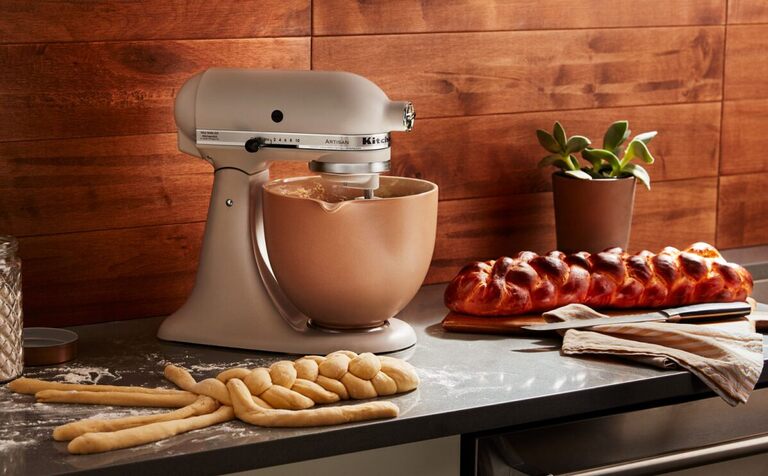A hand mixer is considered a handy equipment since it allows you to do a variety of chores without having to dig around in the closet for a full-sized mixer. Here are our recommendations on why you might want one, what to look for, and how to choose a hand mixer.
1. Why You Should Find A Hand Mixer

If you're a seasoned baker or just getting started, you'll quickly find your arm muscles squealing for assistance with the complex combination of mixing dough, dough, and pastry. But which is ideal for you: a stand mixer, a hand mixer, or a hand mixer on a stand? What you prefer to bake, the size of your kitchen, and how much money you have to spend will all influence the sort of mixer you choose. The primary distinctions between the three types of mixers are explained below. Alternatively, you may jump right to our list of the best stand mixers.
A hand mixer is a better alternative than a full-sized mixer for the occasional baker who has to whisk eggs, whip cream, and combine batter.
It is really handy to store the countertop mixer in the cabinet and just use it for batch cooking. However, if you enjoy baking, having both is worthwhile.
Hand mixers are as follows:
- Mixers are smaller and take up less bench and storage space.
- Reasonably priced
- Light
- Very simple to use and clean.
It's worthwhile to invest in a high-quality, well-made hand mixer. For the greatest results, use a somewhat circular and narrow bowl so that you can rotate the whisks around the bowl to achieve an uniform mixing.
2. How to Choose Hand Mixer
Price

Prices for the most current hand mixer evaluations normally vary from $15 to $199. However, price is not always an indicator of quality; there are both low-cost and high-cost versions with excellent value.
Weight

A hand mixer that is too heavy to wield is unpleasant, and one that is too light will give you little control, so aim for something in the middle.
Handle

The handle should be made from comfortable and non-slip material.
Attachments

These must be of sufficient length, as shorter beaters will limit the size of the bowl you may use. Beater attachments are all you'll need; whisks and dough hooks aren't necessarily superior.
Dishwasher-safe accessories

These are far easier to clean than those that cannot be washed in the dishwasher.
Controls

Controls should be easily accessible, and speed settings should change smoothly. With stiff controls, you may mistakenly press to high speed when just low is required, resulting in a genuine egg on your face!
A variety of speed options

To avoid splattering, use a moderate speed for folding and mixing ingredients and a high speed for whisking egg whites and cream. Five speeds are probably all you'll need, so don't get too enthusiastic about anything more.
Pulse

You may remove extra mixture from the beaters by using the pulse function.
Boost

A boost function delivers a surge of power.
Stability

A hand mixer should be able to stand upright without collapsing or toppling over due to the cord.
3. How to Clean Hand Mixer

Learn how to clean a hand mixer correctly to take excellent care of your most important kitchen tool.
Your beloved hand mixer is an excellent kitchen gadget. It is useful for swiftly making cakes and cupcakes from scratch, as well as for some of the more unusual recipes. It can be inexpensive, simple to operate, and capable of performing a wide range of mixing activities. However, have you seen any splashing up or around the device? This is how you clean a hand mixer (and maintain it for years to come).
Whatever you're mixing will end up in the gap where the metronomes are placed. Make certain that it is clean. If the dough dries there, it may eventually interfere with the mixer's regular performance. This baby bottle brush is effective, but a toothbrush with firm bristles or toothpicks can also be used to remove grime. A little brush, like a sponge, can assist you effortlessly clean the nooks and crannies of your beater.
When you're using your hand mixer, the first thing you should do is unplug it from the power source. This eliminates the possibility of electric shock or finger injury if the fingers become accidently trapped in the beater.
While this type of build-up may only need to be handled when the appliance is in severe need of a thorough cleaning, there are a few additional stages to the hand mixer cleaning checklist.
It's preferable to clean the beaters as soon as possible so that the batter doesn't stick to them. You may put them in the dishwasher if you plan to run it soon, but it's easier to soak them in warm, soapy water and wipe them down. In any case, always eject and clean them; keeping unclean beaters in your mixer puts you at danger of permanently jammed blades.
Is there anyone striking the ball? Simply use a sponge or moist cloth to gently scrape the outside of the mixer to remove any leftover residue. Make sure the sponge isn't too moist – getting water into the engine might harm the hand mixer.
However, never submerge your mixer in water. You should also clean the wire since dough can fly up and out of the mixing bowl. It just takes a minute, and we adhere to the one-minute rule.
4. Kitchen Mixer Attachments
Flat beater
The flat beater is arguably the most flexible since it can thoroughly mix almost any type of material.
The flat beater is also useful for a variety of meals, particularly heavier mixes such as cakes, cookies, frostings, mashed potatoes, and even meatloaf!
Hook for dough
A dough hook is the perfect tool for dealing with heavier doughs like bread, pizza, or pasta. Using any other type of mixer attachment may cause the mixer to overheat and damage.
Whiskey balloon
Lighter-textured baked foods, such as chiffon and angel food cakes, receive their light and fluffy texture from beaten egg whites.
Edge beater flex
This one resembles a flat beater, but one of its sides is composed of silicone or rubber rather than the original substance.
The flexibility of the silicone edge allows you to mix and scrape the edges of the bowl at the same time, avoiding the need to halt the mixture and physically scrape the insides of your bowl with a spatula.
Conclusion
Hand mixers can only tolerate mixing for short periods of time before overheating, so avoid mixing dough and thick dough for more than three minutes at a time to guarantee your hand mixer lasts a long time. Longer durations of mixing can also be taxing on your hands and wrists because of the constant holding and moving. Hơp some steps on how to choose a hand mixer will help you fit one.













